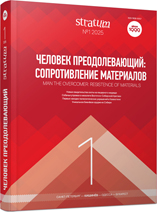Находки перфорированных и окрашенных раковин рода Corbicula на стоянке верхнего палеолита Рахат (Северный Тянь-Шань, Казахстан)
Finds of Perforated and Colored Shells of the Genus Corbicula from the Upper Palaeolithic Site Rakhat (Northern Tien Shan, Kazakhstan)
Author(s): Dmitry V. Ozherelyev, Olesia I. Uspenskaya, Pavel D. Frolov, Yulia S. GubarSubject(s): History, Archaeology, Prehistory
Published by: Издательский дом Stratum, Университет «Высшая антропологическая школа»
Keywords: Northern Tien Shan; Upper Palaeolithic; Rakhat site; mollusks of the genus Corbicula; traceology; red pigment; ornamentations;
Summary/Abstract: The article examines a collection of perforated shells of freshwater bivalve mollusks Corbicula from cultural layers 2 and 3 of the Upper Palaeolithic site of Rakhat. The Rakhat site was discovered in 2006, and excavations have been in progress since 2018. The site is located in the foothills of the Trans-Ili Alatau (Northern Tien Shan, Kazakhstan). The site contains 16 cultural layers dating back to ~28,000—19,000 uncal BP (~31000—23000 cal BP). Layers 2 and 3 belong to the upper part of the cultural sequence and have been radiocarbon dated to 19385 ± 40 uncal BP and 19520 ± 45 14C uncal BP (~ 23700—23300 cal BP). These layers, as well as the entire group of cultural layers 1—5, yielded an innovative lithic industry characterized by the presence of scalene triangles. The shells in question belong to the species Corbicula tibetensis Prashad, 1929. Currently, the Corbicula mollusks do not live in the rivers and lakes of the studied area. The article reconstructs the methods used to perforate shells and argues in favor of artificial origin of the red pigmentation on their surfaces. The perforated shells from Rakhat are the first finds of the Upper Palaeolithic personal ornaments in Kazakhstan.
Journal: Stratum plus. Археология и культурная антропология
- Issue Year: 2025
- Issue No: 1
- Page Range: 229-250
- Page Count: 22
- Language: Russian
- Content File-PDF

